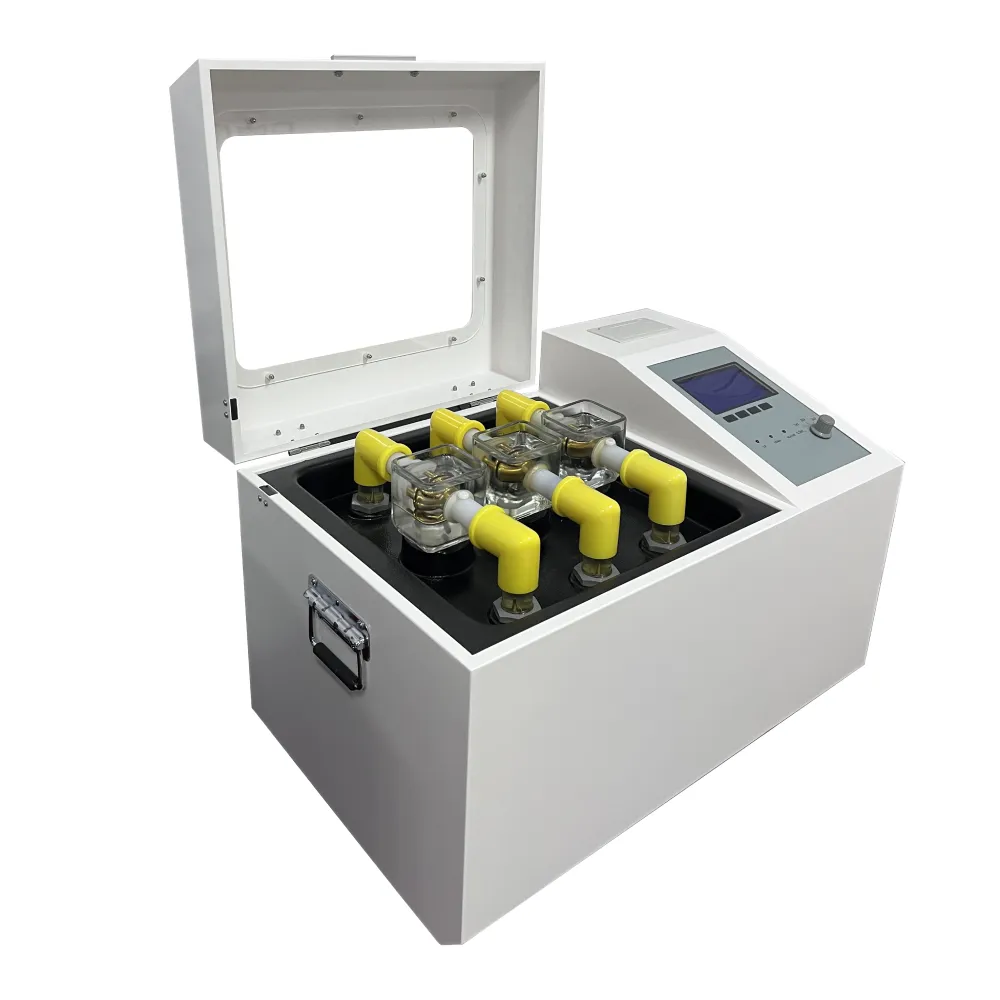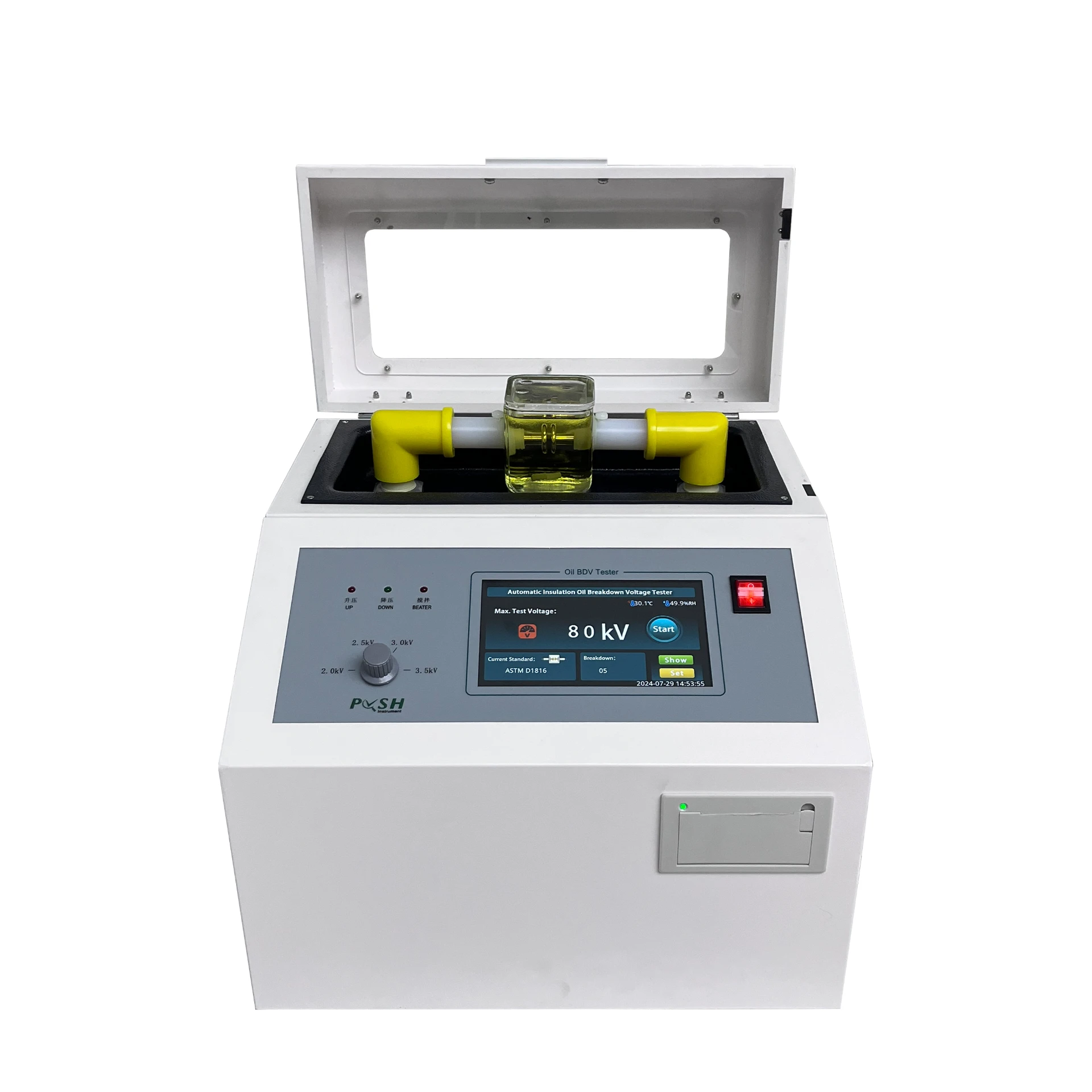TEL:
+86-0312-3189593
 English
English

Telephone:0312-3189593

Email:sales@oil-tester.com
2 月 . 15, 2025 18:41
Back to list
transformer oil test types
Transformer oil testing is a crucial aspect of maintaining the health and efficiency of power transformers. With the increasing demand for reliable electricity and the expanding infrastructure, ensuring the longevity and optimal performance of transformers is more critical than ever. This article delves into the various types of transformer oil tests, highlighting their importance and the expertise required for effective analysis.
Acid Number testing measures the acidity level of the oil, indicating its degradation status. Higher acidity levels are a sign of oxidation, which can lead to corrosion and sludge formation within the transformer. This test is crucial for maintaining the chemical stability of the oil, ensuring long-term performance and reliability. Furan analysis, though less commonly discussed, is of paramount importance. It evaluates the condition of solid insulation by detecting furanic compounds in the oil. These compounds indicate the degree of paper insulation degradation. Monitoring furan levels helps in planning maintenance activities and can extend the transformer's service life. The Particle Count test measures the number and size of particles in the oil, reflecting the filter and oil maintenance effectiveness. Excessive particles can indicate wear and tear or significant internal issues requiring immediate attention to prevent catastrophic failures. Transformer oil testing requires a high level of expertise and experience. Understanding the nuances of each test and interpreting the results demand a thorough knowledge of electrical engineering and materials science. Trustworthy professionals must not only perform these tests with precision but also provide actionable insights and recommendations based on the findings. Adopting a comprehensive transformer oil testing program can significantly enhance transformer performance and reliability. Investing in expert analysis ensures that all aspects of transformer oil quality are monitored, maintaining electricity supply continuity and safeguarding expensive infrastructure. By prioritizing these tests, operators can prevent unexpected outages, reduce maintenance costs, and prolong the operational life of their transformers, aligning with the increasing demands of modern infrastructure.


Acid Number testing measures the acidity level of the oil, indicating its degradation status. Higher acidity levels are a sign of oxidation, which can lead to corrosion and sludge formation within the transformer. This test is crucial for maintaining the chemical stability of the oil, ensuring long-term performance and reliability. Furan analysis, though less commonly discussed, is of paramount importance. It evaluates the condition of solid insulation by detecting furanic compounds in the oil. These compounds indicate the degree of paper insulation degradation. Monitoring furan levels helps in planning maintenance activities and can extend the transformer's service life. The Particle Count test measures the number and size of particles in the oil, reflecting the filter and oil maintenance effectiveness. Excessive particles can indicate wear and tear or significant internal issues requiring immediate attention to prevent catastrophic failures. Transformer oil testing requires a high level of expertise and experience. Understanding the nuances of each test and interpreting the results demand a thorough knowledge of electrical engineering and materials science. Trustworthy professionals must not only perform these tests with precision but also provide actionable insights and recommendations based on the findings. Adopting a comprehensive transformer oil testing program can significantly enhance transformer performance and reliability. Investing in expert analysis ensures that all aspects of transformer oil quality are monitored, maintaining electricity supply continuity and safeguarding expensive infrastructure. By prioritizing these tests, operators can prevent unexpected outages, reduce maintenance costs, and prolong the operational life of their transformers, aligning with the increasing demands of modern infrastructure.
Previous:
Latest news
-
Differences between open cup flash point tester and closed cup flash point testerNewsOct.31,2024
-
The Reliable Load Tap ChangerNewsOct.23,2024
-
The Essential Guide to Hipot TestersNewsOct.23,2024
-
The Digital Insulation TesterNewsOct.23,2024
-
The Best Earth Loop Impedance Tester for SaleNewsOct.23,2024
-
Tan Delta Tester--The Essential Tool for Electrical Insulation TestingNewsOct.23,2024





